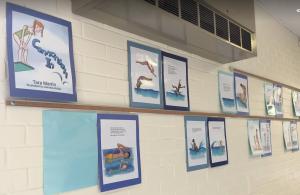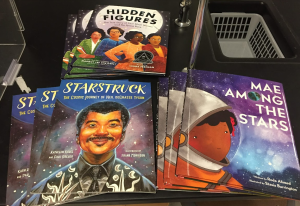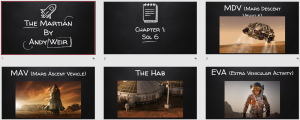TL;DR:
- All students benefit from being read to.
- All content areas can find engaging books to read.
- Connecting the book to your content makes your subject area AND reading fun!
I am a former middle school science teacher. I taught 8th-grade physical science and earth science. Even though I was not an ELA teacher, I read to my students almost every day. And my students LOVED it!
Regardless of your content area or grade level, take a moment to think of a book you could bring into your classroom. Share on XUse Picture Books
Throughout the year, I use a variety of picture books that correspond to my content. It is a way to reduce the intimidation of some of the science concepts that are covered in 8th grade. I start the year with Cannonball In by Tara Martin. Even though it is a “children’s book,” my class engaged in deep conversations regarding the challenging journey one must travel to become a leader. By starting with a book unrelated to the content, I ease my students into the types of book studies we will do all year long—and it is fun! I also used Hidden Figures by Margot Lee Shetterly and Winifred Conkling, Mae Among The Stars by Roda Ahmed, and Starstruck: The Cosmic Journey of Neil DeGrasse Tyson by Kathleen Krull and Paul Brewer.

I turned the books I read to my students into Story Walks that I placed in the hallway.

A selection of astronomy books for Story Walk
Use Novels Connected to Your Content
But the one that I love the most was our novel which was just made for middle school science. I read The Martian by Andy Weir. This book has everything you need to engage a middle school science student! There is a funny and smart protagonist (who makes sarcastic jokes that middle school students appreciate). The book includes a mix of action, suspense, joy, sadness, and problem-solving—which make for a very entertaining storyline. But what makes this a truly amazing book for a science classroom is that there is a TON of physics, math, astronomy, chemistry, electromagnetic waves, and geology woven in. And even though this is a science fiction book, the science is sound!
Make the Reading Visual
I made slides to correspond to each chapter to help my more visual students understand some of the higher-level vocabulary. These pictures included images of Mars, the rovers, space suits, and habitats used by the astronauts. Another example of what I included in my slides was the chemical formula to show the reaction the main character used to make water from hydrazine. I also showed my students the math used to calculate how much soil and water the main character would need in order to grow his crop of potatoes on Mars.

An example of the Google Slides I created to go along with The Martian as I read to the class
We took the entire year to read the book. I would either do a chapter (or 10 minutes if the chapter was long) a day. I knew it was working when I would get to the end of a reading and the entire class would yell out, “No! You can’t stop reading there!” Some of my students actually went out and got the book so that they could read along with me. Some went ahead and watched the movie because they couldn’t wait for the next reading installment. (Note: I warned them that the movie was not nearly as good as the book! But it helped them to better follow the storyline, and we had great conversations talking about the differences between the two.)
[scroll down to keep reading]
So teachers, regardless of your content area or grade level, take a moment to think of a book you could bring into your classroom. Do you want to tackle a year-long novel? Or would you rather do a series of smaller books? Maybe you could find a variety of novels and do “teasers” throughout the year. By only reading the first couple of chapters, your students might get hooked and check them out from the library to read independently. Honestly, it doesn’t matter which one you choose as long as you consistently read to your students.
Please be sure to tag me on Twitter (@hollyastuart) with your favorite read-alouds. I would love to hear your suggestions on how to incorporate more reading time in your classroom! (Also, I am always looking to expand my to-read book list!) By sharing your ideas, you just might be the one to help another teacher come up with a great experience for their students! And that will help us all to Science Better!
About Holly Stuart
Holly Stuart is the Education Specialist for Foldscope Instruments and former 8th grade science and design teacher in South Carolina. Her passions include finding new and innovative ways to provide access to scientific tools to students everywhere because she knows that when students have access to the wonders of science, they can discover new scientific concepts through inquiry, and learn science by doing science.
In addition to her out-of-the-box approach to teaching science, Holly successfully implemented The Grid Method into her teaching practice and is currently a Teach Better Team Mentor Ambassador.
Holly is married to her high school sweetheart and is a mother to three children. When not working, she enjoys traveling and being outside with her family. Some of their favorite outdoor activities include hiking, running, biking, and gardening. (Holly often brings her telescope, binoculars, and microscopes with her on hikes!) Her indoor hobbies include reading, writing, and learning more about sketchnoting and drawing.



